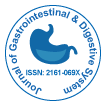Unsere Gruppe organisiert über 3000 globale Konferenzreihen Jährliche Veranstaltungen in den USA, Europa und anderen Ländern. Asien mit Unterstützung von 1000 weiteren wissenschaftlichen Gesellschaften und veröffentlicht über 700 Open Access Zeitschriften, die über 50.000 bedeutende Persönlichkeiten und renommierte Wissenschaftler als Redaktionsmitglieder enthalten.
Open-Access-Zeitschriften gewinnen mehr Leser und Zitierungen
700 Zeitschriften und 15.000.000 Leser Jede Zeitschrift erhält mehr als 25.000 Leser
Indiziert in
- Index Copernicus
- Google Scholar
- Sherpa Romeo
- Öffnen Sie das J-Tor
- Genamics JournalSeek
- Nationale Wissensinfrastruktur Chinas (CNKI)
- Elektronische Zeitschriftenbibliothek
- RefSeek
- Hamdard-Universität
- EBSCO AZ
- OCLC – WorldCat
- SWB Online-Katalog
- Virtuelle Bibliothek für Biologie (vifabio)
- Publons
- Genfer Stiftung für medizinische Ausbildung und Forschung
- Euro-Pub
- ICMJE
Nützliche Links
Open-Access-Zeitschriften
Teile diese Seite
Abstrakt
Relationship between the Diet and the Bone Mineral Density in Children with Celiac Disease
Jose C Salazar*, Beatriz Espin, Alejandro Rodríguez, Federico Argüelles, Rosario Garcia, Justo Valverde and María Rubio
Objective: To analyze whether there were any deficiencies in the celiac diet that could affect dual X-ray absorptiometry (DXA), comparing a diet with gluten to one without gluten.
Methods: Forty-three children aged 1-13 years diagnosed with celiac disease (CD) were studied. Bone mineral density (BMD) was measured using DXA. A food questionnaire was completed before the start of the gluten-free diet (GFD) and again one year after diagnosis, when the patient was on a strict GFD.
Results: Lumbar spine BMD (g/cm2) increased over the one-year follow-up (P<0.001). We did not find significant differences in the percentages of energy intake and nutrients: carbohydrates (47.94% vs. 47.02%), lipids (34.73% vs. 36.24%) and proteins (17.65% vs. 16.60%). We found deficient vitamin D intake in both the gluten-containing and the GFDs. In observing the relationships between dietary intake and Z-score BMD, we found a significant correlation with the vitamin D intake at diagnosis.
Conclusion: The GFD is a healthy diet, similar in both macronutrients and micronutrients to a diet with gluten. The principal factor for BMD improvement is adequate proper compliance with the GFD.
Zeitschriften nach Themen
- Allgemeine Wissenschaft
- Biochemie
- Chemie
- Genetik und Molekularbiologie
- Geologie und Geowissenschaften
- Immunologie und Mikrobiologie
- Klinische Wissenschaften
- Krankenpflege und Gesundheitsfürsorge
- Landwirtschaft und Aquakultur
- Lebensmittel & Ernährung
- Maschinenbau
- Materialwissenschaften
- Medizinische Wissenschaften
- Pharmazeutische Wissenschaften
- Physik
- Sozial- und Politikwissenschaften
- Umweltwissenschaften
- Veterinärwissenschaften
Klinische und medizinische Fachzeitschriften
- Anästhesiologie
- Augenheilkunde
- Betrieb
- Dermatologie
- Diabetes und Endokrinologie
- Gastroenterologie
- Genetik
- Gesundheitspflege
- Immunologie
- Infektionskrankheiten
- Kardiologie
- Klinische Forschung
- Medizin
- Mikrobiologie
- Molekularbiologie
- Neurologie
- Onkologie
- Pädiatrie
- Pathologie
- Pflege
- Toxikologie
- Zahnheilkunde

 English
English  Spanish
Spanish  Chinese
Chinese  Russian
Russian  French
French  Japanese
Japanese  Portuguese
Portuguese  Hindi
Hindi